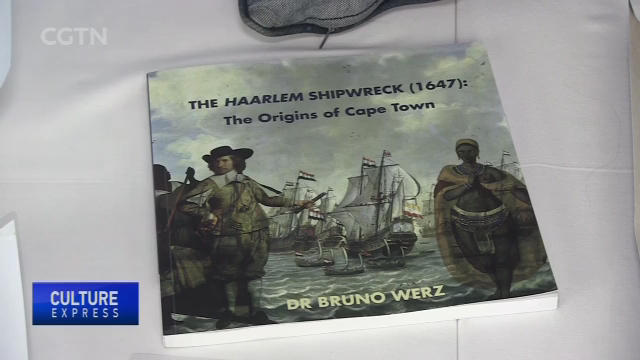
19:00, 19-Aug-2019
S. Africa Tourism: Country hopes shipwreck discovery will invigorate tourism
Updated
19:39, 19-Aug-2019

In 1647 a Dutch ship called The HAARLEM was wrecked in a storm off the coast of South Africa. As a result, the ship's survivors came into contact with the indigenous people of the region, eventually establishing Cape Town. A team of South African maritime archeologists believe they have discovered site of the wreck and there are hopes that it could invigorate new tourism. CGTN's Travers Andrews has more on this.
It's a mystery that has taken years to solve, but now maritime archeologists that have spent years taken the Haarlem believe her story and final resting place will finally be unearthed.
They've zero in on a location using various investigative techniques and puzzled together a picture and narrative, which shows with almost certainty, that the Haarlem lay under 2 to 8 meters sand, between the high water and low water mark.
DR BRUNO WERZ MARITIME ARCHEOLOGIST "Based on archival information, based on cartographic information, based on geological knowledge, geophysical surveys and finally set excavations, we think we have enough proof to say that we are 95% convinced that this is the wreck site of the Haarlem."
The wreck is thought to be located on a local beach near Table Bay Harbour, the team carried out extensive underwater searchers, as well as topside excavating.
What they found was artifacts that have been sent for carbon dating and show encouraging results of wooden pre-dating the ships construction, now a plan is being put in place to excavate her.
DR BRUNO WERZ MARITIME ARCHEOLOGIST "I hope to fully expose the wreck, document in great detail to the highest professional principles and then close it up again because it's best preserved in the situation that it is in."
That's ships discovery though does have an incredible historical value to the city, with it's arrival to these shores signaling the birth of what is now the modern Mother City.
TRAVERS ANDREWS CAPE TOWN, SOUTH AFRICA "The team believes excavating the Haarlem will not only take a lot of money but a bold plan that includes constructing a protective barrier around the excavation site."
ROB BOUWER, MARINE EXCAVATION CONTRACTOR GUERRINI MARINE CONSTRUCTION "The wreck is sitting between the high level low level mark, so it's very much intertidal and it's in the sand, so the problem is as we excavate the sand comes back, so we'll build a curtain, a seal curtain around the vessel, the challengers are to excavate deep enough down, so you can stop sand and water from coming underneath."
The Haarlem team are now applying for the necessary excavation permits so that they can start the challenging task of finally earthing the ship wreck, which may take place during the summer months when the seas are the most calm. Travers Andrews, CGTN, Cape Town.
SITEMAP
Copyright © 2018 CGTN. Beijing ICP prepared NO.16065310-3
Copyright © 2018 CGTN. Beijing ICP prepared NO.16065310-3